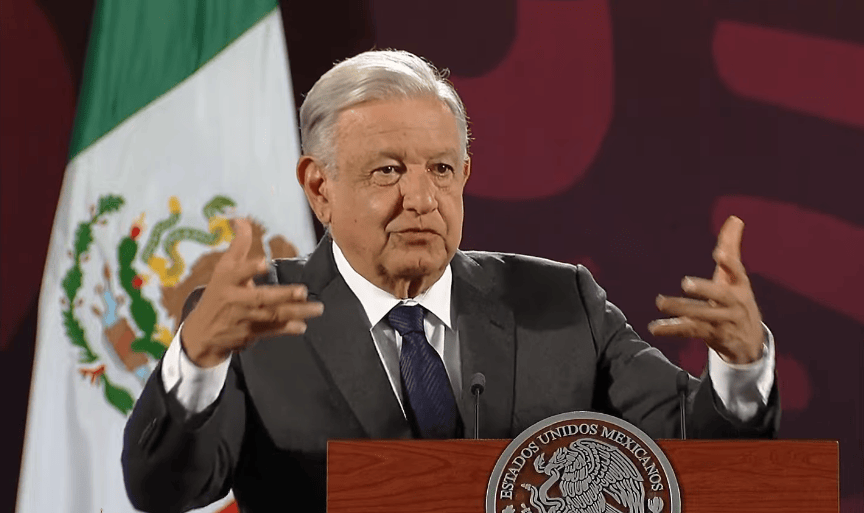 Español
Español
July 28, 2024
by Henry Vermillion, text and paintings
A recent article in the New York Review of Books, while praising the six-year presidency of Andrés Manuel López Obrador for his achievements: student aid, a 300% increase in the minimum wage, a decrease in the number of Mexicans in poverty, universal old age pensions..., criticized him for making little progress in reducing the power of the drug cartels. In this the authors compared him negatively to his predecessor, Felipe Calderón, who they observe, "kept a lid on crime through pacts with the cartels."
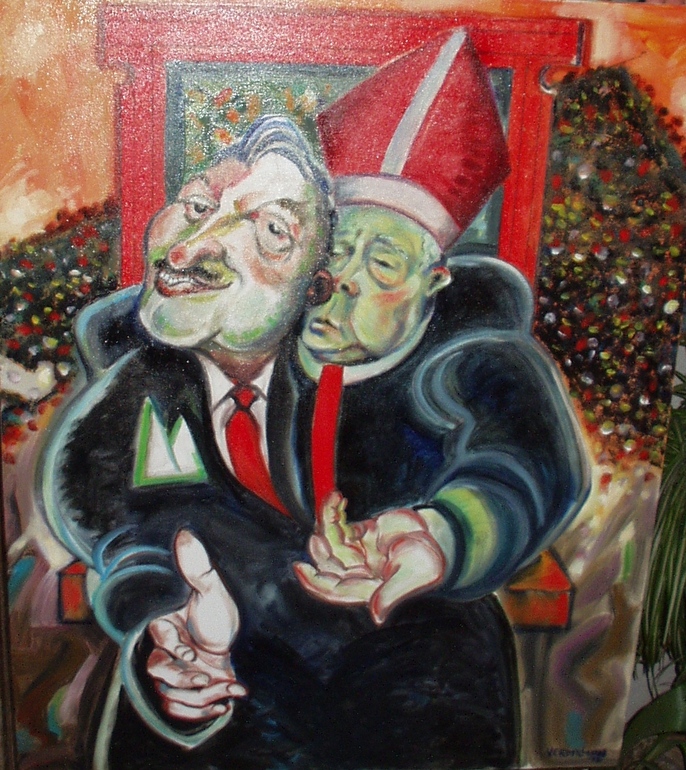
History of Mexico II
*
What the article fails to mention is that that "lid on crime" was the result of millions of dollars of protection payoffs from the cartels to Calderón's cabinet minister for national security, Genaro García Luna. García Luna is currently serving a long prison term in the U.S. for taking those payoffs to protect El Chapo's Sinaloa Cartel and to prosecute other, competing cartels.
The middle-man between García Luna and the Sinaloa Cartel was a Mexico City lawyer named Oscar Paredes, the same lawyer who in 2010, during Calderon's presidency, came into our gallery and bought several large paintings of mine. I made inquiries about him and was told he was an "abogado del Diablo," a lawyer who defended drug dealers in court. Well... He paid cash for the paintings. He liked San Miguel. In a couple of weeks, he returned and bought another painting. I met him and got to know him a bit. He was an agreeable fellow; I liked him. Every artist needs collectors; he was an art collector. He came to a get-together at our house, along with his five- or six-man entourage. Guitars and drinks came out, and a good time was had. A young man in his group lit his cigarette by pulling out his billfold; when he opened it, a flame came out. He performed other magic tricks as well. The young magician particularly admired a painting of mine on our wall which featured a magician; Oscar said "It's yours," and bought it for him on the spot.
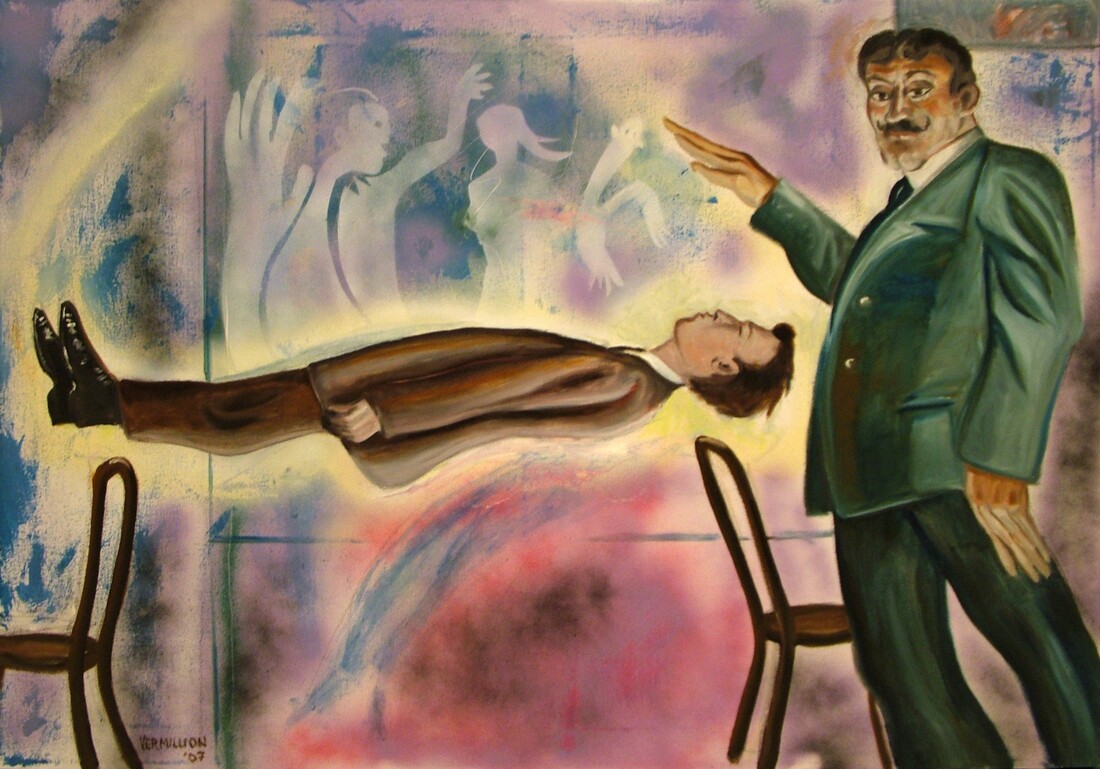
The Magician
*
Oscar invited me to visit him in Mexico City; I did, and stayed in one of the several houses he owned in the Capital. I was his guest for an afternoon of shooting at the firing range of the Mexico City Police Department. He was well known there, and we were easily passed through the several security checkpoints. After two and a half hours of target shooting with everything from pistols to AK47s, my right shoulder was sore for a week from the kickback of the long guns.
While in DF, we drove to one of Oscar's haciendas. (I believe he owned three, in various parts of the country.) This one was in the mountains past Mineral del Monte, near Pachuca, Hidalgo. A beautiful but semi-deserted place, the old hacienda property sheltered a spectacular waterfall which cascaded over basaltic granite columns. (It was much more striking than a similar well-known basaltic waterfall nearby which is open to the public.)
On a later visit to San Miguel, Oscar invited Britt and myself to a cocktail event at another of Oscar's ex-haciendas, this one closer to home. This partially reconstructed site is visible from the San Miguel-Dolores highway. Behind the handsomely restored main building, Oscar had built a small factory equipped with modern lathes and machine tools; the plan was to train locals to learn to make fine furniture there. The workers would share in the proceeds. I got to know the place. Oscar urged that we open an art gallery in the main building, rent-free, but I couldn't see it—too far away from town.
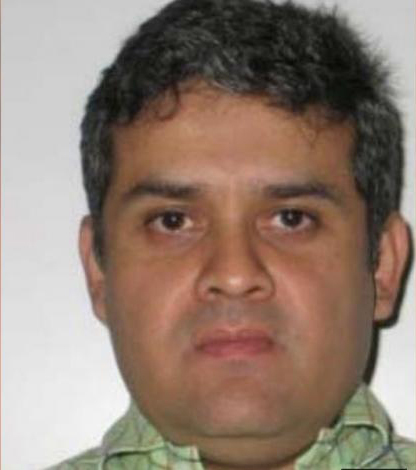
We kept in touch. Oscar promised to come to the early August opening of a one-person show of my work at the Instituto Allende. When he didn't show up, I was disappointed, but not overly concerned. He was a busy man. Two weeks later, I learned that on August 22nd he had been killed in Mexico City.
It was a revenge killing. Sometime before we knew him, his teen-age son had been kidnapped; eventually, Oscar paid the ransom. The boy was freed, and Oscar immediately sent him off to finish his schooling somewhere in the U.S. Midwest, far out of harm's way. The rest of the story, as I learned it: Oscar had discovered that the kidnapping was planned and carried out by a ranking official in the Mexico City police department. That official was then shot and killed on the street by unknowns. Some months afterward, a man knocked on the door of the after-hours bar in Colonia Roma where Oscar was talking and drinking with friends. Pizza delivery! the man called. The locked door was opened, and the pizza man opened fire, killing Oscar and wounding two of the other men inside.
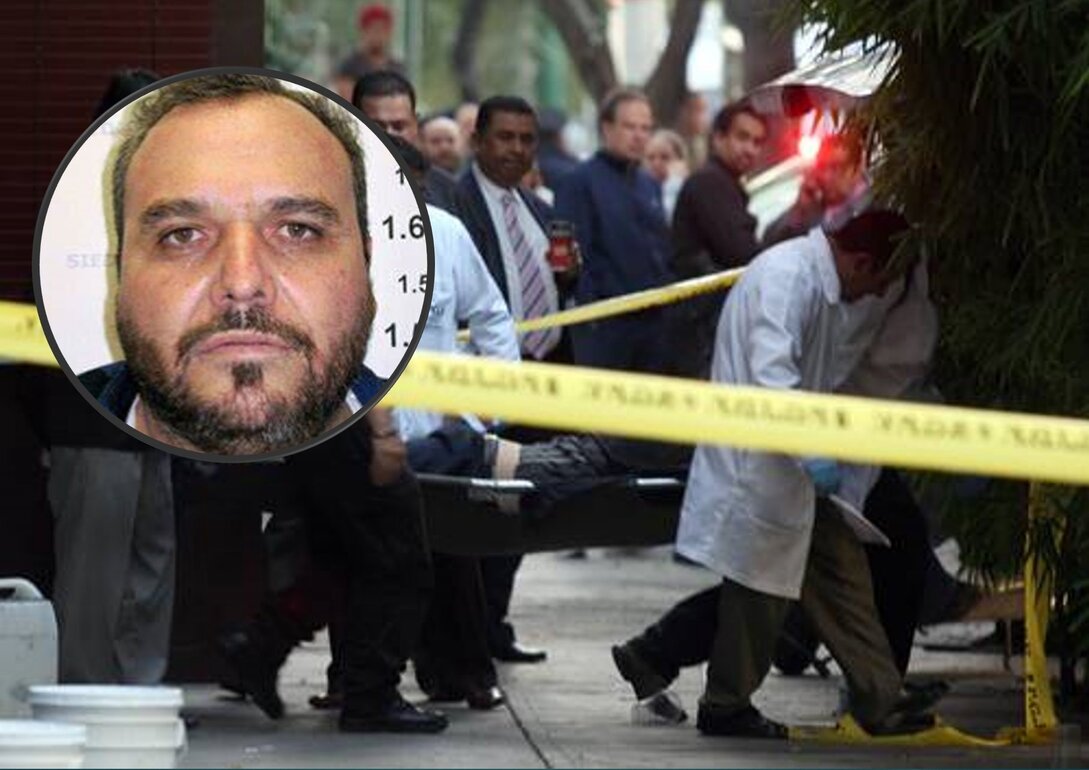
An internet search of newspapers from that time made it clear that Oscar's bodyguards were the ones who carried the duffle bags of cartel cash into the presidential palace.
Thinking back, I remembered the first time I climbed into his car. It was on a visit to his hacienda at Mineral del Monte. I noticed that the big sedan had two-inch thick windows. It was my first ride in a bulletproof car. I realized I should have expected a scenario something like that.
*****
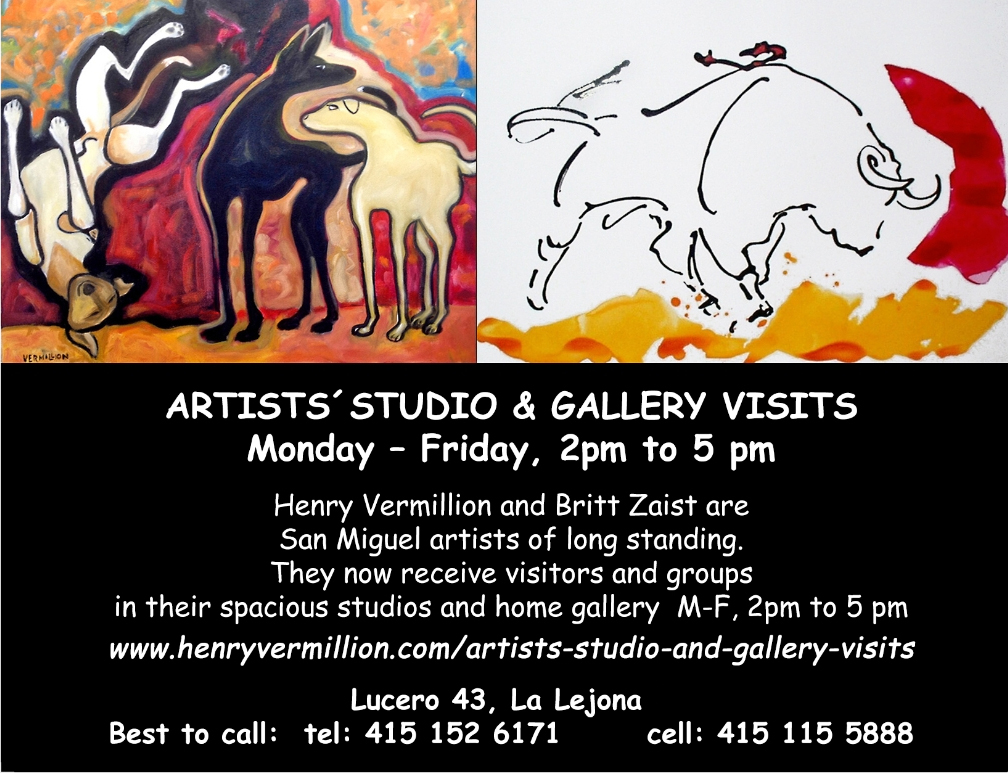
Studio / Gallery Visits
*********

Henry Vermillion was born in El Paso, and grew up in small towns in Texas and New Mexico. He graduated from the University of New Mexico in Albuquerque, with degrees in English literature and biology. He studied Social Work in the MSW program at the University of Texas in Austin.
He is a U.S. Army veteran. In Raleigh, North Carolina, he was president of the non-profit Wake Visual Arts Association. In 1995, he was awarded the Raleigh Medal of the Arts.
In November of 1992, Henry, his wife Britt Zaist, and five other painters opened the co-op Galeriía Izamal, which, until its closing in January of 2022, was San Miguel's oldest art gallery.
**************
*****
Please contribute to Lokkal,
SMA's online collective:
 ***
***
Discover Lokkal:
Watch the two-minute video below.
Then, just below that, scroll down SMA's Community Wall.
Mission

Visit SMA's Social Network
Contact / Contactar

